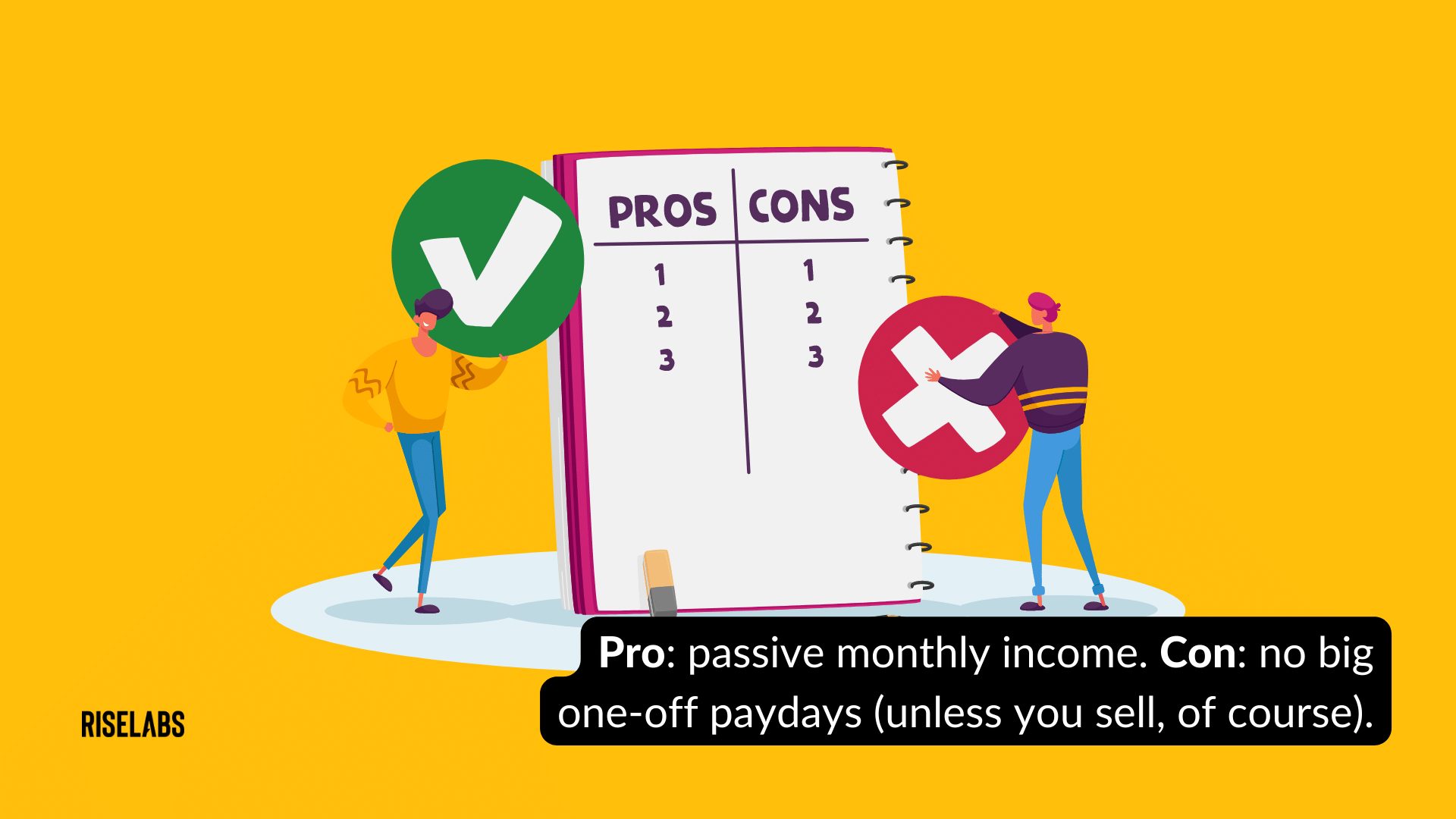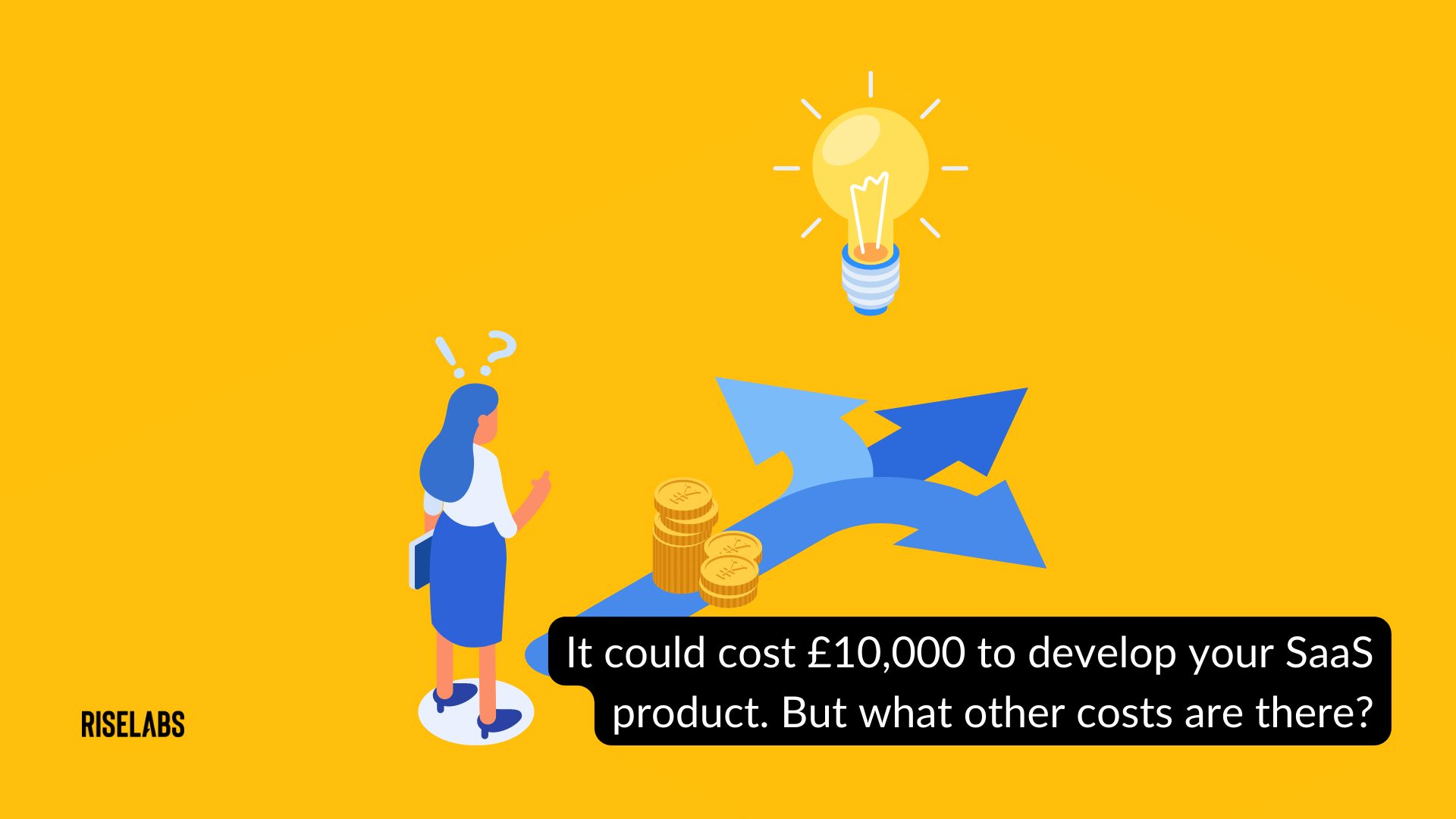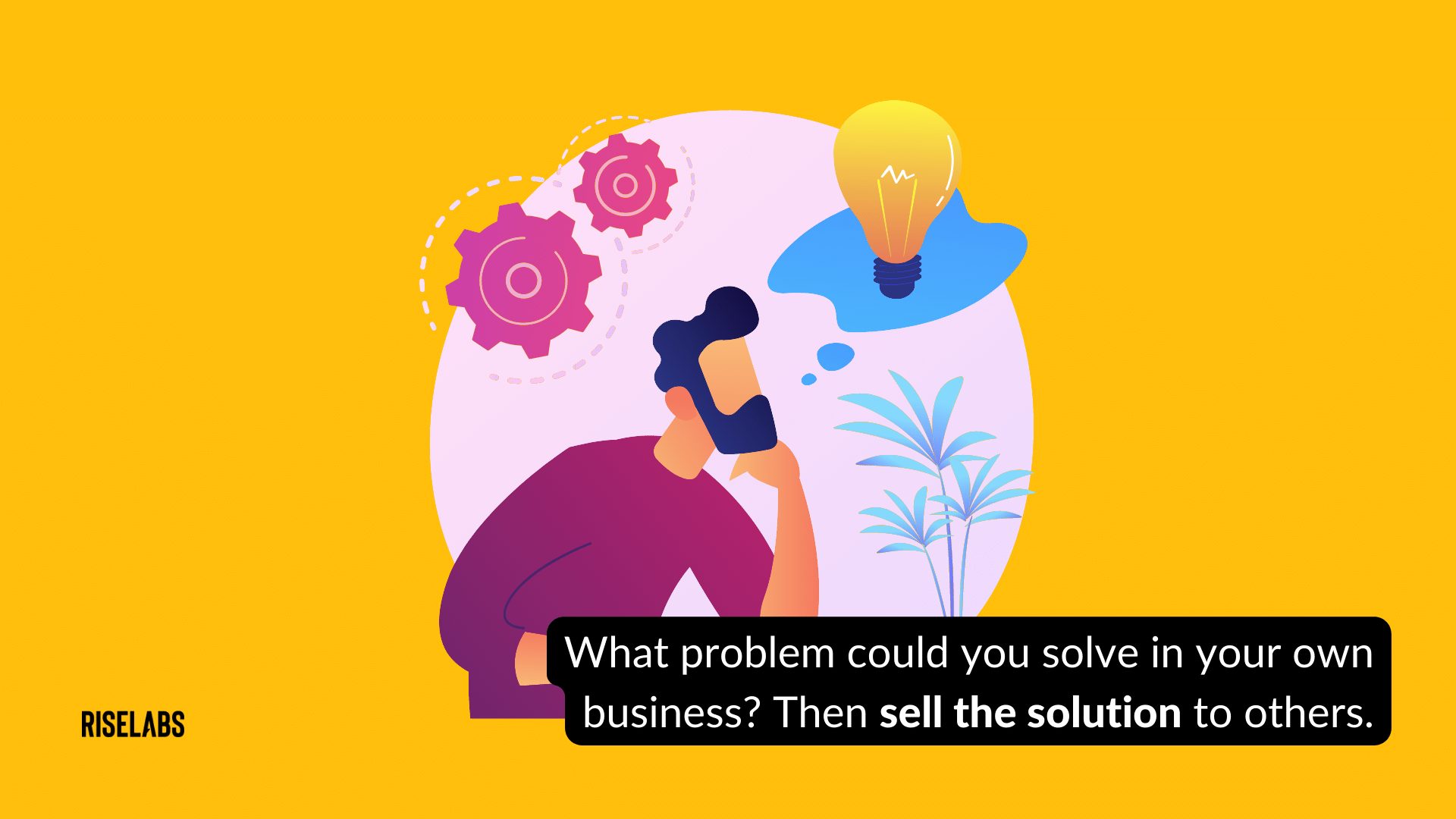This article will teach you how SaaS businesses develop a service that can make money and become profitable.
SaaS is popular among businesses of all sizes, from small startups to large enterprises, due to its low cost of entry – often using subscriptions – and vast, near-unlimited scalability. SaaS businesses can generate income by charging customers for subscription services or through one-time fees for additional features, making them highly profitable over time.
To make money with SaaS, you need to provide a valuable product or service that meets the needs of your target market. You’ll work hard on customer acquisition to create loyal, paying customers. Simple, right? Let’s get into SaaS.
What Is Software-as-a-Service (SaaS)?
Firstly, we need to understand what SaaS is, why it’s so popular and how many companies have turned to subscribing to or “renting” the software they need to run their business.
SaaS (Software as a Service) is a cloud-based software delivery model that provides customers access to applications hosted on the vendor’s cloud platform without installing any apps or programs locally on their device.
With no application or program to install, any user with an internet connection can access the software for nearly any device, such as laptops, tablets or mobile devices anywhere in the world.
SaaS businesses provide various services and products, from customer relationship management (CRM) software to data analysis, forecasting tools and design applications.
 How does SaaS business generate revenues?
How does SaaS business generate revenues?
We say revenues with an S, as a SaaS business often has multiple income streams from different types of users or even variations of their service, such as personal or commercial versions.
The most common way the SaaS business model generates income is through a recurring fee, such as a monthly or yearly subscription fee for the use of the software. Some models are usage-based, depending on the data, services or tools the customer requires.
Is SaaS a reliable business model for the future?
Yes, the SaaS business model creates a stable reoccurring monthly income. You’re on to a winning business concept if you have the time to invest in creating a business and a service that users will flock to spend their hard-earned money on.
Why should I create a SaaS company?
Many of our clients “scratch their own itch”. This is to say; they have a problem in their business that could be solved with software and quickly realise other companies have the same problem.
By building your own SaaS platform or app, your business can generate a new revenue stream from your competitors. Not only have you significantly reduced your costs, but you are also building a return on investment through licencing your idea to other businesses.
8 key reasons for building your own SaaS:
1. They are scalable and can grow with your business.
2. They have a low cost of entry, making them attractive business opportunities.
3. It offers a higher profit margin than traditional software licenses.
4. They often enjoy high customer retention rates and long-term customer relationships.
5. It delivers recurring revenue, which is more predictable and reliable than one-time fees or product sales.
6. The SaaS model allows for faster feature releases and updates since you’re not limited by the release cycle of your software clients.
7. Proper marketing enables a company to quickly generate a large user base without expensive advertising campaigns or partnerships.
8. A well-executed SaaS business model can be highly lucrative over time, generating millions in yearly profits.
 Can I make money with SaaS?
Can I make money with SaaS?
The short answer is yes, and there is plenty of evidence to suggest building your own subscription, licence or one-off sales software as a service will make you money.
SaaS companies make money by selling their services or products on a subscription model. This means that customers pay a certain amount of money upfront and then recurringly on a monthly, quarterly or yearly basis, depending on the SaaS product. SaaS businesses can make money through paid trials, freemium plans and enterprise-level subscriptions. They can also generate revenue through usage-based pricing models, which charge customers depending on the amount of software they use.
No matter which SaaS model you choose for your business, SaaS is a reliable and profitable way to generate revenue that will continue to grow as long as you retain and grow your customer base.
What pricing model should I use?
SaaS pricing models vary depending on the service or product but usually involve a monthly fee for access to the SaaS platform.
SaaS companies can also make money through usage-based pricing models, which charge customers depending on the amount of software they use.
SaaS businesses often offer trial periods to give potential customers a chance to test out their services before committing to a subscription model or one-time fee.
What is a freemium model?
A freemium model is a SaaS pricing model where customers can use a basic version of the product or service for free, with more advanced features and capabilities available for an upgrade fee. Hubspot is an excellent example of this model.
Companies that offer this model make money by providing free versions of their software to attract new customers and then charging for more advanced features and capabilities. This often results in higher sign-ups and a more extensive user base but can dilute your offering or make it challenging to justify upgrades.
It allows customers time to try a product before committing to a subscription or one-time fee. Once you have a customer’s details, you can continue to market to them your premium options.
Ultimately, businesses that use a free model can make money from free and paid customers, which helps them increase their revenue and become more profitable over time.
Should I offer a free trial?
SaaS businesses often offer trial periods to give potential customers a chance to test out their services before committing to a subscription model or one-time fee. However, free trials often result in excessive sign-ups from low-value users (those that won’t use the software, competitors and light users), which gives a business a false sense of success.
Paying users have invested their money and time into your platform, which is a far better measurement of product viability than someone who might invest.
Consider offering a money-back guarantee. By showing confidence that your SaaS platform will do X, help with Y or ensure the success of Z, you give the user a win-win situation. They can try your software and prove it works, but if they are unhappy for any reason, they can safely request a refund.
Should I require a credit card for my trial?
Users do not like handing over their credit card details to determine if they are a good fit.
Typically, offering trails without requiring a credit card results in higher sign-ups but risks users not investing their time into your software, as they have no real risk of loss. However, requiring a credit card to trail or test your service is often a big turn-off for users, resulting in lower sign-ups and often more support requests for refunds where users have forgotten to cancel (this is also a dark pattern or trick for making a quick buck off forgetful users).
Requiring a credit card is a hotly debated topic at https://ux.stackexchange.com/questions/16311/recording-debit-credit-card-details-at-the-start-of-a-free-trial
How can I make money with an affiliate program?
With an affiliate program, SaaS businesses can offer incentives or rewards to affiliates who refer new customers, often by a URL or a voucher code. The affiliate then takes a cut of the revenue generated, either by a one-time payout or a % cut of monthly/yearly subscriptions.
By partnering with an established network, businesses can access a wide range of potential customers, and affiliates benefit from the business’s products or services. Companies can also leverage their existing customer base to become affiliates and refer new customers, creating a valuable referral network in exchange for a perk, upgrade or discount.
 Examples of Successful SaaS Businesses
Examples of Successful SaaS Businesses
These are just a few successful SaaS businesses that have helped businesses run more efficiently. By offering a valuable product or service, getting the word out about their company, and keeping customers happy, they’ve made billions in revenue, created countless jobs and generate lifetime value for their customers.
There’s no doubt you know about or even use these services daily, often provided by the company you work for:
1. Salesforce: Salesforce is one of the most successful SaaS businesses. It is a cloud-based SaaS platform that offers customer relationship management (CRM) software, which helps sales teams manage their customer relationships and run more efficiently. With its comprehensive suite of products, it continues to be the first product many businesses use.
2. Slack: Founded in 2013, Slack provides collaboration and communication tools for teams. It is a cloud-based platform with messaging, file sharing, video conferencing and other features to help teams work together more efficiently. It has become a popular SaaS tool, with over 10 million daily active users.
3. HubSpot: Founded in 2006, HubSpot provides an array of marketing and sales tools to help businesses grow. It offers software for marketing automation, customer relationship management (CRM), website development, lead generation, analytics and more. It has become a SaaS powerhouse with over 76,500 customers and counting.
4. Zoom: Launched in 2013, Zoom offers video conferencing services to businesses of all sizes. Its simple-to-use interface, high-quality video and audio capabilities, and secure data encryption have become one of the most popular products.
5. Dropbox: Founded in 2007, Dropbox provides cloud storage and file syncing services for businesses. Its simple drag-and-drop interface and secure data encryption make it easy to store and access files from anywhere. It is one of the most popular products, with over 600 million users worldwide.
You don’t have to aim for millions of users to be a successful SaaS company
These examples are businesses that saw a gap in the market based on user’s needs and wants, growing to the behemoths they now are. However, many of us use much smaller apps and platforms daily, such as:
- Calendly for appointment making appointments with clients
- Miro for working collaboratively in a whiteboard environment
- Tawk for chatting with users with live web chat
- Timetastic for keeping track of your team’s holiday time off work
- Toggl for time tracking work
 The Pros of the SaaS Business Model
The Pros of the SaaS Business Model
SaaS customers are some of the most loyal because they see your product as an essential part of their business. They almost feel like members of a club that only those in the know have exclusive access to, often meaning referrals come from a place of expertise on your product.
Customer retention is essential with the SaaS business model, and keeping customers happy and fulfilled with the features they need is critical. Keep users happy, and they will tell their friends, resulting in more income.
Many people involved with online businesses hope for recurring income, and the model is built on this idea of regular income.
The Cons of the SaaS Model
SaaS makes money over time, often with slow and steady growth. It can take years before the owners see an actual return on investment.
With a high upfront design and development cost, your idea may need to take on investment or other financial support to even startup. You’ll need to consider that unlike traditional software, where a company may spend thousands on the latest version, the recurring income will drip through as companies add more users.
Finally, SaaS businesses have to keep up with the competition. SaaS products become outdated quickly, so it’s essential to continually innovate and offer new features that will excite customers and help your business stand out from the competition – which costs money.
 How much does it cost to create a SaaS product?
How much does it cost to create a SaaS product?
Designing, developing and deploying a SaaS product can cost £10,000 or more, depending on your features, requirements and types of users (desktop, mobile etc.). However, the companies mentioned above in our examples have spent millions on design and development.
Design and development costs
One of the biggest costs for your SaaS startup is design and development. You need to create a product with the user in mind, so you’ll need to invest in customer feedback, design and development of features that meet customer needs. Before deploying your software, you’ll need to prototype those ideas, get feedback, and ensure they are well-tested.
Consider sales and marketing costs
Once your product is up and running, you need to start getting customers on board. This means investing time and money into marketing and sales. This may include hiring staff to help with customer service and support, running campaigns that target potential users and attending SaaS conferences.
Many platforms start with a beautiful and intriguing landing page that details pricing plans, ensuring potential new users have somewhere to go and sign up when you introduce your service.
How much does it cost to run a server?
A server can cost as little as £10/m. You’ll need a server to run your SaaS as it is accessible through a web browser, like any other website. A cheap server will manage only a limited amount of users, and nothing kills a startup faster than not being able to provide your service quickly without long wait times.
Invest in good server infrastructure from a reputable company and ensure it has the specifications to manage your early adopters and scale for future users.
Will your service provide or use an API?
Another cost to consider is any integrations with third parties. SaaS services often need to integrate with other providers, for example connecting a payment gateway for e-commerce. If you’re offering an API that others can use, you’ll need to be able to manage the traffic of users accessing your API and provide support when needed.
 Tips for Making Money as a SaaS Company
Tips for Making Money as a SaaS Company
You make money with SaaS by offering a product or service that users need that makes their lives easier and helps them make money. It sounds easier said than done, and many startups struggle to acquire enough new customers to be profitable and maintain business growth.
Money lost, money made: Churn rate
Churn rate is a key SaaS metric to measure customer loyalty and business growth. It helps businesses understand their customer retention rates and the success of any marketing or sales efforts in acquiring new customers. The churn rate (also known as the attrition rate) is calculated by dividing the number of customers who have cancelled their subscriptions in a given period by the total number of customers at the start.
Get a commitment on your idea
Friends and family will tell you your idea is great. People are nice like that! However, money given to you is the absolute benchmark test, and your startup needs paying users to help you validate your idea.
Our advice? Scratch your own itch first.
Many of our clients who have gone on to sell their businesses, or continue to make a profit from their SaaS idea, did so because they saw an opportunity in their own business to make their lives easier, make more money from customers and spend less on other software or staff time.
In another article, we’ll help you review your business and spot opportunities to turn a problem into profit. If you don’t want to wait, then contact us today.



 Can I make money with SaaS?
Can I make money with SaaS? Examples of Successful SaaS Businesses
Examples of Successful SaaS Businesses The Pros of the SaaS Business Model
The Pros of the SaaS Business Model How much does it cost to create a SaaS product?
How much does it cost to create a SaaS product? Tips for Making Money as a SaaS Company
Tips for Making Money as a SaaS Company

